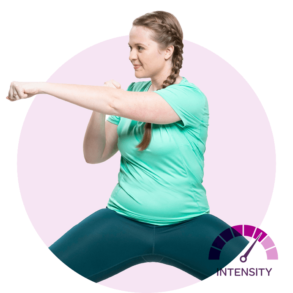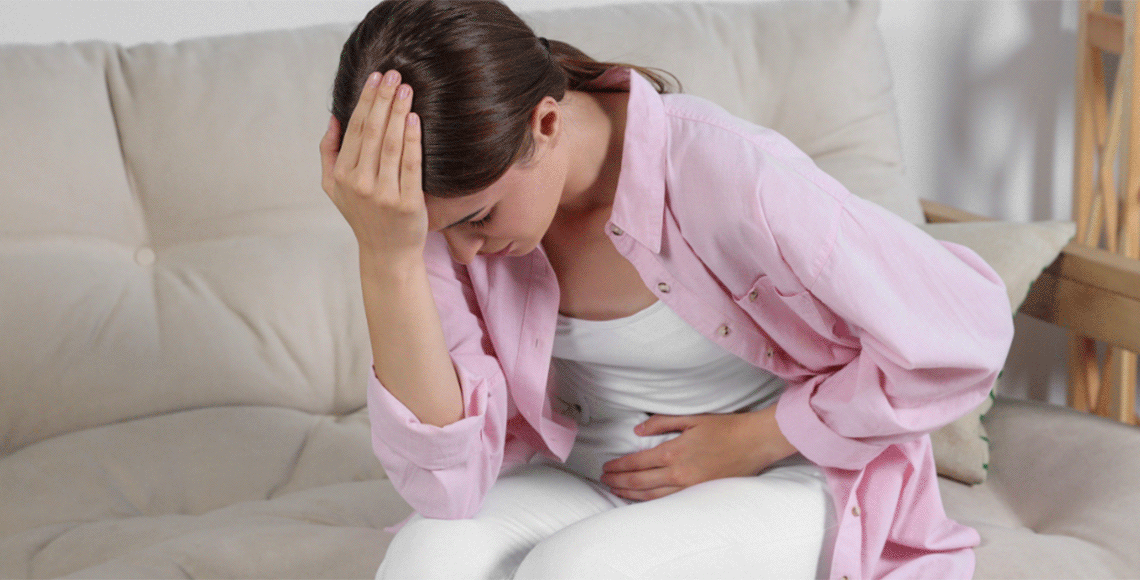Unraveling the Causes of Bladder Pain in Women: Understanding Bladder Pain Syndrome
Bladder pain can be a distressing symptom that affects many women, causing discomfort and affecting their daily lives. Bladder Pain Syndrome (BPS), also known as interstitial cystitis, is a chronic condition characterised by persistent bladder pain, urinary urgency, and frequency. While the exact causes of BPS are not fully understood, it is crucial to explore the symptoms, potential triggers, and recommended approaches to alleviate the symptoms and improve overall well-being. In this article, we will delve into the causes of bladder pain in women, shedding light on the symptoms, underlying factors, and suggested courses of action to manage and relieve the pain.
Understanding Bladder Pain Syndrome
Bladder Pain Syndrome is a complex condition involving chronic inflammation and irritation of the bladder wall. It predominantly affects women, with estimates suggesting that 3 to 8 million women in the United States may have BPS.
One of the hallmark symptoms is chronic pelvic pain, typically felt in the lower abdomen, pelvis, or bladder area. This pain can vary in intensity and may range from mild discomfort to severe, debilitating pain that persists for long periods. The pain may be constant or intermittent and may worsen as the bladder fills with urine, leading to a frequent urge to urinate. While there is currently no known cure for BPS, symptoms can be managed and treated effectively, allowing women to experience improved quality of life.
Urinary Tract Infections (UTIs)
Bladder Pain Syndrome is often misdiagnosed as a urinary tract infection (UTI) due to overlapping symptoms. UTIs are common infections of the urinary tract, typically caused by bacterial infection of the urinary tract, commonly the bladder, urethra, or kidneys. The hallmark symptoms of a UTI include a strong, persistent urge to urinate, accompanied by a burning sensation during urination, cloudy or foul-smelling urine, and pelvic discomfort or pressure.
On the other hand, bladder pain syndrome is a chronic condition characterised by pelvic pain, urinary urgency, and frequency, without evidence of bacterial infection or other identifiable causes. The exact cause of bladder pain syndrome is not fully understood, but it is believed to involve dysfunction of the bladder lining and abnormal signalling between the bladder and nervous system. Women with bladder pain syndrome may experience chronic pelvic pain that persists for months or years, often worsening as the bladder fills with urine. Other symptoms may include discomfort during urination, urinary urgency, and a frequent need to urinate.
Reproductive System Changes
Changes in the reproductive system can play a significant role in contributing to bladder pain in women, particularly during certain stages of life such as pregnancy, childbirth, and menopause. Pregnancy can put pressure on the bladder as the growing uterus expands, leading to increased frequency of urination and discomfort. Hormonal changes during pregnancy can also affect the pelvic floor muscles and bladder function, potentially exacerbating bladder pain symptoms. Additionally, hormonal fluctuations associated with pregnancy can increase the risk of urinary tract infections (UTIs), which may cause bladder pain.
Childbirth, especially vaginal delivery, can have a profound impact on the pelvic floor muscles and surrounding structures, potentially leading to bladder pain and urinary symptoms. The stretching and trauma that occur during childbirth can weaken the pelvic floor muscles, compromising their ability to support the bladder and maintain urinary continence. This may result in symptoms such as urinary urgency, frequency, and pelvic pain. Additionally, childbirth-related injuries or trauma to the pelvic nerves or tissues can contribute to bladder pain syndrome or other pelvic floor disorders.
Furthermore, hormonal changes associated with menopause can also influence bladder health and contribute to bladder pain in women. As estrogen levels decline during menopause, the tissues of the urinary tract, including the bladder lining, may become thinner and less elastic, making them more susceptible to irritation and inflammation. This can lead to symptoms such as urinary urgency, frequency, and discomfort. Additionally, changes in estrogen levels can affect the tone and function of the pelvic floor muscles, further predisposing women to bladder pain and pelvic floor dysfunction. Managing hormonal changes and addressing pelvic floor issues through appropriate treatments and interventions can help alleviate bladder pain and improve overall pelvic health in women.
Bladder Cancer
While bladder cancer is relatively rare, it can cause bladder pain in women. The most common type of bladder cancer is transitional cell carcinoma. Symptoms of bladder cancer include blood in the urine (hematuria), frequent urination, pain during urination, and pelvic discomfort.
Bladder cancer can cause bladder pain in women as the tumour grows and affects the bladder lining and surrounding tissues. Early-stage bladder cancer may not always present with noticeable symptoms, but as the tumour progresses, it can lead to various urinary symptoms, including pain or discomfort in the bladder area. This pain may be felt as a dull ache or sharp, stabbing sensation and may worsen with urination or physical activity. As the tumour enlarges, it can obstruct the flow of urine, causing further discomfort and urinary symptoms.
It is essential to seek medical attention if any of these symptoms arise to rule out serious conditions.
Recommended Course of Action to Alleviate Bladder Pain Symptoms:
To alleviate bladder pain symptoms, a comprehensive approach that includes your doctors’ care along with regular strength training, cardio exercises, and stretching can be beneficial. Strength training, such as pelvic floor exercises, can help improve the tone and function of the pelvic floor muscles, which play a crucial role in bladder control and support. Strengthening these muscles can reduce urinary urgency, frequency, and leakage, thereby alleviating bladder pain symptoms. Incorporating exercises like pelvic floor contractions where you focus on gently lifting your pelvic floor squats, and lunges into a regular strength training routine can help strengthen the pelvic floor muscles and improve bladder function over time.
Cardio exercises help improve overall circulation and promote cardiovascular health, which can support bladder function and reduce inflammation. Engaging in regular cardio workouts can also help manage stress levels and improve mood, which are important factors in managing chronic pain conditions like bladder pain syndrome. Aim for at least 30 minutes of moderate-intensity cardio exercise most days of the week to reap the benefits for bladder health and overall well-being.
Additionally, incorporating stretching exercises into your routine can help alleviate muscle tension and improve flexibility, which can contribute to bladder pain relief. Stretching exercises that target the pelvic region, such as hip flexor stretches, butterfly stretches, and yoga poses like a supine piriformis stretch or a low back twist can help relax tight muscles and alleviate discomfort in the bladder area. Practising relaxation techniques such as deep breathing and mindfulness meditation alongside stretching exercises can further promote relaxation and reduce stress, which can exacerbate bladder pain symptoms. Overall, a balanced approach that combines strength training, cardio exercises, and stretching can help manage bladder pain symptoms and improve overall bladder health and function.
Reduce Stress
Stress can exacerbate bladder pain symptoms. Tight pelvic floor muscles can cause the pelvic floor and bladder to become hypertonic. This causes blood flow to be restricted and the area to be deprived of oxygen. Reducing stress can play a crucial role in alleviating bladder pain symptoms, as stress is known to exacerbate conditions like interstitial cystitis or bladder pain syndrome. Stress triggers the release of cortisol and other stress hormones, which can increase inflammation throughout the body, including the bladder. In individuals with bladder pain conditions, heightened stress levels can lead to flare-ups of symptoms such as pelvic pain, urinary urgency, and frequency. Therefore, incorporating stress-reduction techniques into daily life can be beneficial for managing bladder pain and improving overall quality of life.
One effective stress-reduction technique is mindfulness meditation, which involves focusing on the present moment and cultivating a sense of calm and acceptance. By practising mindfulness regularly, individuals can learn to manage stress more effectively, reducing the physiological response to stressors and lowering overall stress levels. This, in turn, can help mitigate bladder pain symptoms and improve bladder function. Incorporating mindfulness meditation into a daily routine, even for just a few minutes each day, can have a significant impact on stress management and symptom relief.
Additionally, engaging in activities that promote relaxation and enjoyment can help reduce stress and alleviate bladder pain symptoms. Whether it’s a fun workout, spending time outdoors in nature, listening to calming music, or pursuing creative hobbies, finding activities that bring joy and relaxation can be beneficial for both physical and mental well-being. These activities help shift the focus away from stressors and promote a sense of balance and harmony, which can contribute to symptom relief for individuals with bladder pain conditions. By prioritising stress reduction alongside other treatment strategies, individuals can take proactive steps towards managing bladder pain and improving overall quality of life.
Change Diet and Eating Habits
Certain foods and beverages can trigger bladder pain symptoms. It is recommended to keep a food diary to identify potential triggers and avoid or limit consumption of irritants such as caffeine, alcohol, spicy foods, artificial sweeteners, and acidic foods.
In addition to avoiding potential triggers, incorporating foods that have anti-inflammatory and soothing properties can help support bladder health and alleviate pain symptoms. Foods rich in omega-3 fatty acids, such as fatty fish like salmon and flaxseeds, have been shown to have anti-inflammatory effects and may help reduce inflammation in the bladder. Incorporating foods with high water content, such as cucumbers, watermelon, and celery, can help dilute urine and reduce irritation of the bladder lining. Consuming foods rich in antioxidants, such as berries, leafy greens, and green tea, can help protect against oxidative stress and support overall bladder health.
Furthermore, maintaining proper hydration is essential for bladder health and can help alleviate bladder pain symptoms. While it may seem counterintuitive to drink more water when experiencing urinary urgency and frequency, adequate hydration is crucial for flushing out toxins and irritants from the bladder. However, individuals with bladder pain conditions should aim to spread out their fluid intake throughout the day and avoid consuming large amounts of fluids at once, which can exacerbate symptoms. By making strategic changes to their diet and hydration habits, individuals can effectively manage bladder pain symptoms and improve their overall quality of life.
Pelvic Floor Muscle Strengthening & Relaxation Exercises
Pelvic floor strengthening exercises can play a vital role in reducing bladder pain symptoms by improving the tone and function of the pelvic floor muscles. These muscles provide support to the bladder, urethra, and other pelvic organs, helping to maintain urinary continence and pelvic stability. Weakness or dysfunction of the pelvic floor muscles can contribute to bladder pain conditions such as interstitial cystitis or bladder pain syndrome. Therefore, incorporating pelvic floor exercises into a daily routine can help strengthen these muscles and alleviate symptoms such as pelvic pain, urinary urgency, and frequency.
Pelvic floor strengthening exercises, such as pelvic bridges, squats, and clamshells, can target different muscle groups within the pelvic floor and promote overall pelvic stability. By regularly performing these exercises, individuals can strengthen their pelvic floor muscles and improve bladder function, leading to decreased pain and discomfort.
Bladder pain in women can be attributed to various factors, including urinary tract infections, reproductive system changes, and, rarely, bladder cancer. Bladder Pain Syndrome (BPS) requires proper diagnosis and management to improve symptoms and enhance quality of life. Understanding the causes and seeking medical attention is crucial in developing an effective treatment plan. Curves’ Strengthen Your Pelvic Floor Health and Wellness Class may be able to help alleviate the symptoms of bladder pain. This is a self-paced class that you can do from the comfort of your own home and will help you develop valuable health and fitness skills for a healthier and more rewarding life. Find out more here.








